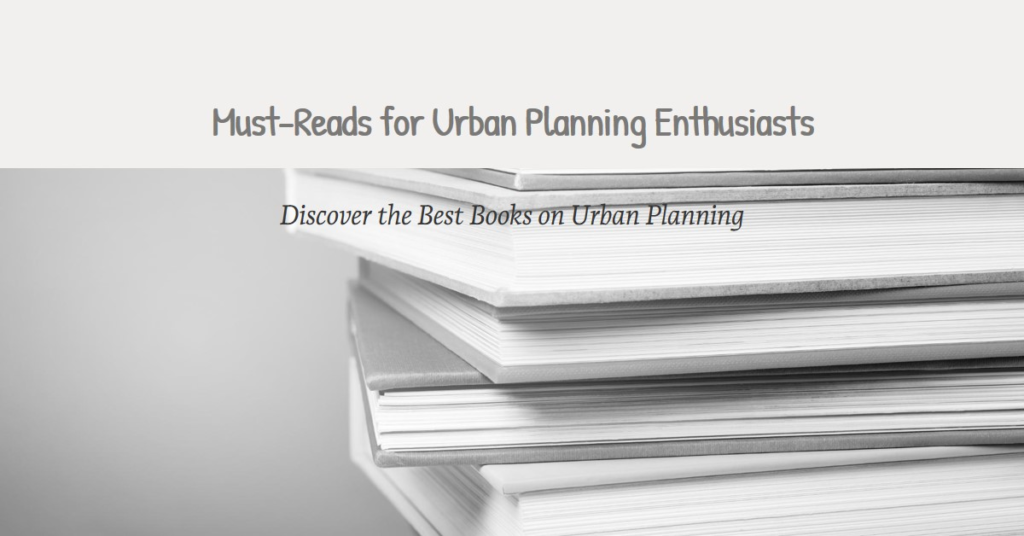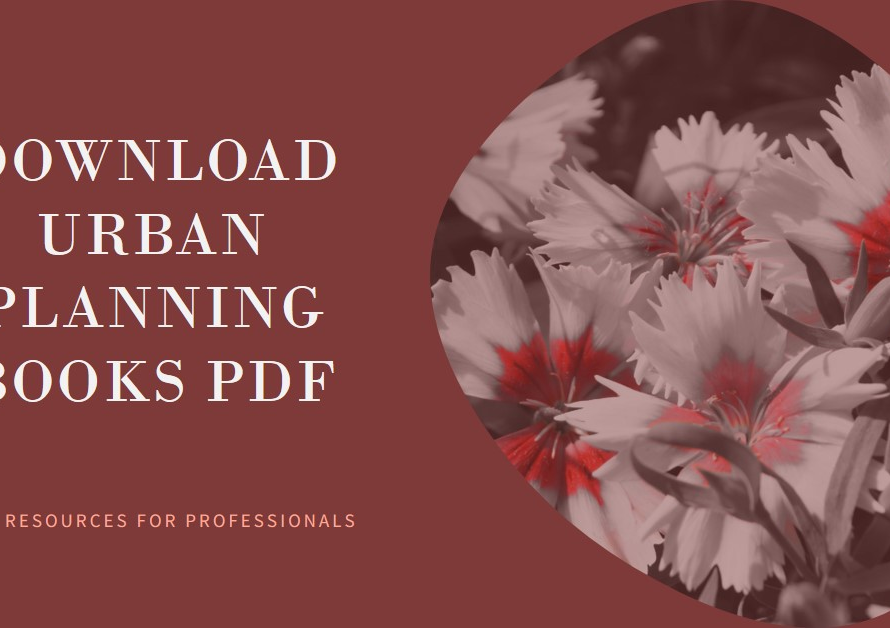
Table of Contents
- Introduction:
- The Foundation: “The Death and Life of Great American Cities” by Jane Jacobs
- The Visionary: “A Pattern Language” by Christopher Alexander
- The Sustainable Vision: “Cradle to Cradle: Remaking the Way We Make Things” by William McDonough and Michael Braungart
- The Sociological Perspective: “The City in History” by Lewis Mumford
- The Environmental Imperative: “The Nature of Urban Design: A New York Perspective on Resilience” by Alexandros Washburn
- The Modern Classic: “Happy City: Transforming Our Lives Through Urban Design” by Charles Montgomery
- The Economic Angle: “The Economy of Cities” by Jane Jacobs
- The Tactical Guide: “Tactical Urbanism: Short-term Action for Long-term Change” by Mike Lydon and Anthony Garcia
- The Global Perspective: “Planet of Slums” by Mike Davis
- Conclusion: Shaping the Future of Cities
Introduction:
Urban planning is a complex and ever-evolving field that shapes the very fabric of our cities. From zoning laws to sustainable development, urban planners play a crucial role in creating functional, livable, and aesthetically pleasing urban environments. For those passionate about urban planning, immersing oneself in the literature of the field is indispensable. This blog post explores some of the most influential and essential books that every urban planning enthusiast should read.
The Foundation: “The Death and Life of Great American Cities” by Jane Jacobs
Jane Jacobs’ seminal work, “The Death and Life of Great American Cities,” is often considered the cornerstone of modern urban planning literature. Published in 1961, Jacobs’ book challenges the prevailing urban planning philosophies of her time, particularly those advocated by Robert Moses, a powerful figure in New York City’s urban development.
Jacobs emphasizes the importance of community and the organic development of neighborhoods. She argues against the large-scale redevelopment projects that displace communities and disrupt the social fabric. Her observations on the intricate ballet of city sidewalks and the critical role of local businesses remain relevant today. For any urban planning enthusiast, this book is a must-read to understand the human-centric approach to urban development.
The Visionary: “A Pattern Language” by Christopher Alexander
“A Pattern Language,” co-authored by Christopher Alexander, Sara Ishikawa, and Murray Silverstein, is a groundbreaking work that introduces the concept of design patterns in architecture and urban planning. Published in 1977, this book presents 253 interconnected patterns that can be used to create livable spaces.
Alexander and his co-authors advocate for designs that cater to human needs and promote well-being. Each pattern is a practical, actionable piece of advice, ranging from the layout of a single room to the design of entire neighborhoods. The book’s holistic approach makes it a timeless resource for anyone interested in creating functional and harmonious urban environments.
The Sustainable Vision: “Cradle to Cradle: Remaking the Way We Make Things” by William McDonough and Michael Braungart
In an era where sustainability is paramount, “Cradle to Cradle: Remaking the Way We Make Things” offers a revolutionary perspective on designing urban environments. Written by architect William McDonough and chemist Michael Braungart, this 2002 publication challenges the traditional “cradle-to-grave” approach of production and waste.
McDonough and Braungart propose a cyclical “cradle-to-cradle” model, where products and materials are designed to be reused or repurposed indefinitely. This philosophy extends to urban planning, advocating for cities designed with sustainability and regenerative practices in mind. For urban planning enthusiasts, this book provides essential insights into integrating sustainable practices into the fabric of urban development.
The Sociological Perspective: “The City in History” by Lewis Mumford
Lewis Mumford’s “The City in History,” published in 1961, is an expansive exploration of the evolution of cities from ancient times to the modern era. Mumford’s comprehensive analysis delves into the social, cultural, and technological factors that have shaped urban environments throughout history.
Mumford emphasizes the relationship between urban form and human behavior, advocating for cities that foster community and creativity. His historical perspective provides valuable context for understanding contemporary urban challenges and opportunities. This book is essential reading for those who wish to grasp the broader sociological implications of urban planning.
The Environmental Imperative: “The Nature of Urban Design: A New York Perspective on Resilience” by Alexandros Washburn
In “The Nature of Urban Design: A New York Perspective on Resilience,” Alexandros Washburn, former Chief Urban Designer of New York City, presents a compelling case for resilient urban design. Published in 2013, this book draws on Washburn’s extensive experience in New York City to illustrate the principles of resilience in urban planning.
Washburn emphasizes the importance of designing cities that can adapt to and recover from environmental, economic, and social challenges. Through detailed case studies and practical examples, he demonstrates how resilient design can create more sustainable and livable urban environments. This book is a vital resource for urban planners seeking to incorporate resilience into their projects.
The Modern Classic: “Happy City: Transforming Our Lives Through Urban Design” by Charles Montgomery
Charles Montgomery’s “Happy City: Transforming Our Lives Through Urban Design,” published in 2013, explores the intersection of urban design and human happiness. Montgomery argues that well-designed cities can enhance the well-being and happiness of their inhabitants.
Drawing on a wealth of research and real-world examples, Montgomery illustrates how urban design can influence social connections, physical health, and overall quality of life. He advocates for human-centric design principles that prioritize pedestrians, cyclists, and public spaces. For urban planning enthusiasts, this book offers valuable insights into creating cities that promote happiness and well-being.


The Economic Angle: “The Economy of Cities” by Jane Jacobs
Another essential work by Jane Jacobs, “The Economy of Cities,” published in 1969, delves into the economic dynamics that drive urban development. Jacobs challenges traditional economic theories and presents a compelling argument for the role of cities as engines of economic innovation and growth.
Jacobs explores how diverse and dense urban environments foster economic creativity and resilience. She highlights the importance of small businesses and local entrepreneurship in driving economic vitality. This book is crucial for understanding the economic underpinnings of urban planning and the factors that contribute to thriving urban economies.
The Tactical Guide: “Tactical Urbanism: Short-term Action for Long-term Change” by Mike Lydon and Anthony Garcia
“Tactical Urbanism: Short-term Action for Long-term Change,” written by Mike Lydon and Anthony Garcia and published in 2015, is a practical guide to implementing small-scale urban interventions that can lead to significant long-term changes. This book is a valuable resource for urban planners, activists, and community leaders looking to make immediate, positive impacts in their cities.
Lydon and Garcia provide numerous examples of tactical urbanism projects, such as pop-up parks, temporary bike lanes, and community gardens. They emphasize the power of grassroots efforts and community engagement in transforming urban spaces. This book is an essential read for those interested in innovative and actionable urban planning strategies.
The Global Perspective: “Planet of Slums” by Mike Davis
In “Planet of Slums,” published in 2006, Mike Davis offers a sobering examination of urbanization in the developing world. Davis highlights the challenges faced by the rapidly growing populations in informal settlements and slums.
Davis provides a critical analysis of the social, economic, and environmental issues associated with unplanned urban growth. He calls for urgent attention and innovative solutions to address the plight of the urban poor. This book is a crucial read for urban planners and enthusiasts who wish to understand the global dimensions of urbanization and the pressing need for inclusive and equitable urban planning.
Conclusion: Shaping the Future of Cities
The books highlighted in this blog post offer a diverse array of perspectives and insights into urban planning. From foundational theories and visionary concepts to practical guides and global analyses, these must-reads provide a comprehensive understanding of the field. For urban planning enthusiasts, immersing oneself in this literature is not only an educational journey but also an inspiring exploration of the possibilities for shaping the future of our cities. By learning from the past and embracing innovative ideas, we can contribute to creating more sustainable, livable, and vibrant urban environments.


